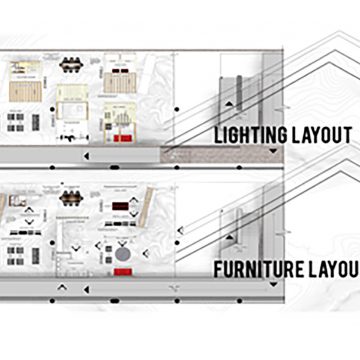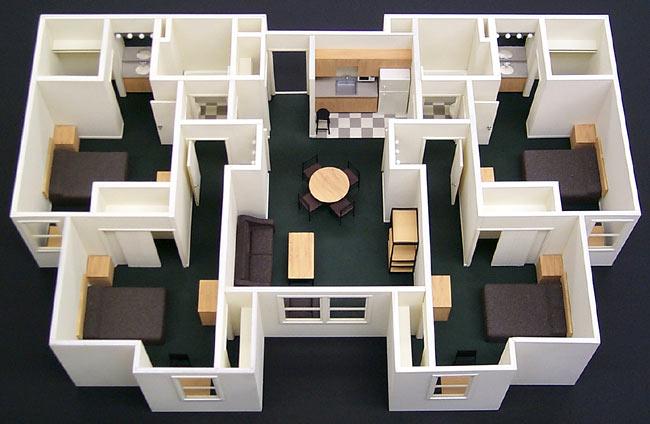Elegant Countryside Homes Interior Design for Modern Living
Wiki Article
Optimizing Visual Appeal: The Harmony In Between Interior Design and Home Designer Methods
Understanding the refined interaction between indoor layout and home style can substantially raise the visual appeal of a space. This marital relationship of layout disciplines involves a thoughtful assimilation of building components with indoor designs, and a proficient application of principles such as balance, rhythm, and contrast. As we discover this harmony, we will reveal methods to develop functional and visually striking environments that not just show individual design, however also adapt to the vibrant needs of modern living.Recognizing the Fundamentals: Specifying Interior Design and Home Design
Indoor design and home design, frequently intertwined, stand for the architectural and aesthetic facets of our living spaces. Interior style is a complex discipline that entails developing functional, secure, and cosmetically pleasing spaces inside a building. On the other hand, home architecture primarily focuses on the strong framework of a structure.The Synergy Explained: How Indoor Design and Home Architecture Intersect
Recognizing the harmony in between interior decoration and home architecture can unlock a world of creative thinking and capability. When reviewing this crossway, the influence of style on insides is an important aspect to consider. This conversation will certainly focus on the unifying design concepts that blend these two fields right into a harmonious wholeUnifying Design Principles
While it may seem that interior layout and home architecture are 2 distinct disciplines, they are really deeply interconnected, developing a synergy that is important for creating unified living spaces. Unifying layout principles are the columns that facilitate this synergy. In significance, these principles offer as the bridge, unifying interior design and architectural practices.Building Impact on Interiors
The intertwining of interior decoration and architecture comes to be even extra obvious when one takes into consideration the building influence on interiors. Architectural aspects are innate to a space's functionality and aesthetics, forming the style from the start. Columns, staircases, light beams or arcs, for circumstances, serve both structural and ornamental purposes. They can divide rooms, produce centerpieces or imbue an area with a certain vibe. Factor to consider of proportion, texture, and light also come from building influences. Eventually, style mold and mildews the canvas upon which interior designers work. Their synergy is thus obvious: style establishes the framework, which indoor design boosts with appearance, shade, and decor. This cooperative relationship ensures a harmonious balance in between feature and appeal, enhancing the visual charm of any area.Secret Principles in Balancing Interior Design and Home Style
Striking a balance between functionality and visual appeal is a basic facet of balancing interior decoration and home architecture. An equally important concept is the combination of sustainable style to produce energy-efficient and green homes. Lastly, understanding and checking out various building styles can additionally play an essential duty in achieving an unified style.
Balancing Functionality and Aesthetic Appeal
Balancing capability and aesthetic appeals in interior decoration and home design emerges as one of the critical concepts to take into consideration. This delicate equilibrium requires a thorough blend of functionality and appeal, intending to produce spaces that are not just visually pleasing yet additionally offer their desired purpose successfully. Visual appeal boosts the mood and affects the understanding of area, whereas performance guarantees usability and convenience. Key to this balance is a thoughtful choice of aspects such as structure, lights, and color, which should match each other while serving their private functions. Similarly crucial is the effective arrangement of the space, with a well-planned layout contributing considerably to the synergy in between performance and appearances. This harmonious mix inevitably enhances the high quality of life for the passengers.Lasting Style Combination
In preserving the equilibrium between functionality and appearances, one must also consider the assimilation of sustainable style concepts. This approach not just improves the visual allure of a room but additionally guarantees its long life and lowered ecological impact. The essential depend on picking materials that are environment-friendly, long lasting, and appealing. This consists of all-natural, recycled, or low-impact materials that add to a much healthier and a lot more lasting world. Developers and architects can also integrate energy-efficient systems, such as energy-saving home appliances or solar panels. Making certain great interior air top quality with enough all-natural illumination and air flow is crucial. A harmonious fusion of interior design and home style, guided by sustainability, can create spaces that are attractive, useful, and ecologically pleasant.Exploring Architectural Styles
While there are a myriad of architectural designs to check out, it is vital to comprehend that each one carries its one-of-a-kind concepts that can significantly influence the harmonization of interior style and home design. These designs, ranging from the luxuriant Baroque to the minimal Modernist, bring distinctive approaches and aesthetics that, helpful site when appropriately recognized and made use of, can develop homes that are not just visually stunning but likewise sympathetically integrated in terms of layout and design. Selecting an architectural style is not just concerning individual visual preference; it has to do with selecting a layout language that speaks with the home owner's way of living, ideology, and goals, producing a home that is a true reflection of its locals.Situation Studies: Remarkable Instances of Layout and Style Synergy
Delving into some extraordinary study provides a profound understanding of how layout and style can harmoniously merge to develop compelling and useful spaces. The iconic Fallingwater residence, designed by Frank Lloyd Wright, exquisitely demonstrates this synergy. Wright's style masterfully incorporates your home with its bordering landscape, while the indoor mirrors the exterior's organic forms. One more example is the minimalistic Tadao Ando's Church of Light in Japan. The designer accomplished an excellent equilibrium in between simpleness and dramatization, making use of raw concrete and light. Inside, the raw, minimal design creates a feeling of serenity and spiritual contemplation. These examples illustrate the significance of synergy between interior design and design in accomplishing functional and aesthetic success.Practical Tips: Enhancing Your Home's Aesthetic Appeal
Attracting motivation from the study of building and style synergy, home owners as well can execute some practical strategies to improve their home's aesthetic allure. A harmonious mix of shades, structures, and lighting can boost an area, developing a cozy and inviting environment. Choosing furnishings that matches the building aspects of your house can promote a sense of unity. Wall surface art and decor items can add personality, reflecting individual style and taste. Incorporating greenery, either via indoor plants or sights to the outdoors, can bring an element of nature, supplying a soothing result. Smart usage of mirrors can open up an area, offering an impression of a larger location. Eventually, the visual appeal depends on stabilizing performance with style, creating a home that is both livable and beautiful.
Future Fads: Exactly How Modern Techniques Are Changing Interior Design and Design
As the world advances, so do the patterns in interior decoration and architecture. Modern strategies are significantly concentrating on sustainability, including environment-friendly materials and energy-efficient layouts. Modern technology plays a vital role, with wise homes becoming the norm, incorporating AI and IoT for improved capability. Additionally, minimalism remains to get traction, highlighting simpleness, functionality, and clutter-free rooms. This is frequently coupled with biophilic design, attracting ideas from nature and promoting health and wellbeing. The pandemic has actually accelerated the requirement for adaptable, multi-purpose areas, obscuring the lines in between work and home. These fads mirror a change towards styles that are not simply visually pleasing, however also eco aware, technologically progressed, and versatile to transforming way of lives.Final thought
In final thought, the combination of interior layout and home style methods is a dynamic approach to boosting visual appeal. By leveraging vital concepts like balance, rhythm, and comparison, and including aspects of modern living, developers can produce versatile, aesthetically pleasing atmospheres. Via comprehending this synergy, home Visit Website owners can make educated decisions that not only raise their living spaces yet likewise add to their general well-being.Comprehending the subtle interaction between indoor design and home design can considerably boost the aesthetic charm of a living space.Indoor design and home design, often linked, stand for the aesthetic and architectural facets of our living spaces.While it might appear that indoor layout and home style are two distinctive disciplines, they are in fact deeply interconnected, forming a harmony that is essential for producing unified living spaces.The intertwining of indoor design and design comes to be also much more evident when one considers the architectural impact on insides. An unified fusion of indoor layout and home architecture, directed by sustainability, can develop view it rooms that are stunning, practical, and ecologically friendly.
Report this wiki page